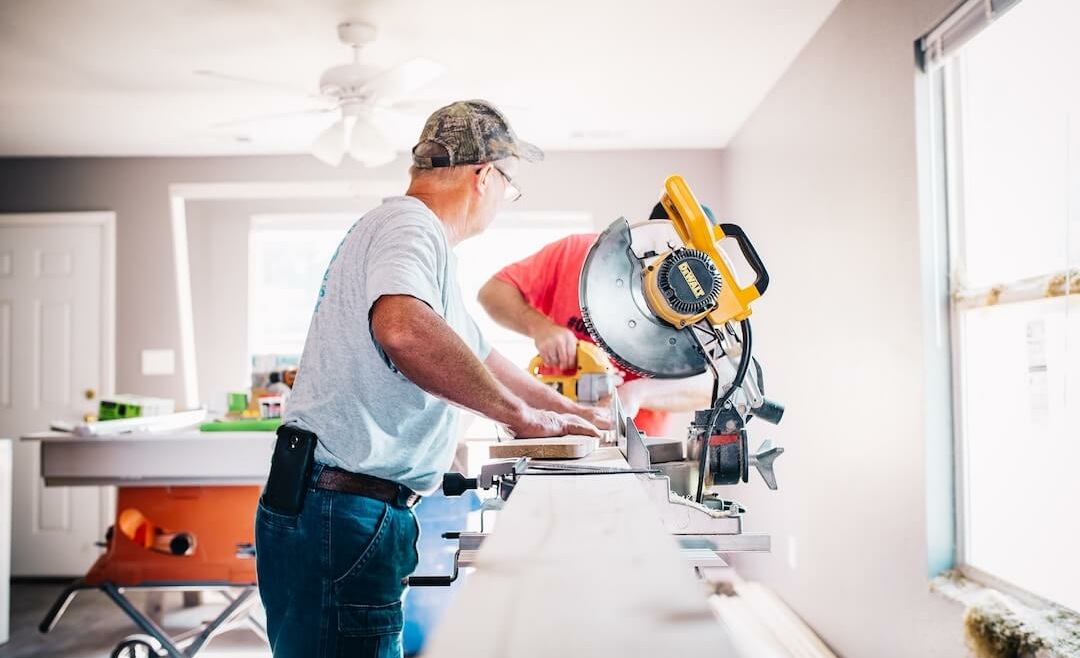Home Improvement and Renovation: A Guide to Borrowing and Saving Money
Are you a homeowner in New Zealand looking to transform your living space with home improvements? Renovations can significantly increase the value of your home, especially if you plan to sell it in the future.
Maybe your current home is in need of home repairs or some much-needed maintenance. Maybe you’ve moved into a new house that needs a new bathroom or you are looking for a quick value-add before renting or selling your home and want to do some cosmetic renovations. Whatever your plans are, you’re probably going to need some finance.
So, whether it’s a small DIY project or a full large-scale makeover, a renovation loan can provide the finance you need. However, before signing up to borrow for renovations, there are some key factors and strategies for saving money to explore.
Types of Home Improvement Loans
When considering a renovation loan, you have two primary options to choose from: unsecured personal loans and mortgage finance.
Unsecured personal loans:
An unsecured home improvement and renovation loan can be used for various purposes, including kitchen renovations, home repairs, landscaping, bathroom renovations, and even eco-friendly upgrades such as solar panel and water tank installations. These loans do not require collateral, such as your home or car, making them a flexible option. While this absence of collateral might make this type of loan may seem attractive, unsecured personal loans generally have higher interest rates than mortgage finance. However, personal loans often have shorter repayment terms than mortgages.
Mortgage refinancing:
If you have enough home equity, refinancing your mortgage can be a way of securing additional funds for your renovation plans. Before going ahead with this type of loan, you need to know whether your mortgage rate is fixed or floating as this will impact your total repayments. Mortgage finance generally has lower interest than unsecured personal loans. While the low-interest rate may seem cost-effective, it’s crucial to evaluate the long-term implications. Putting the renovation loan on your mortgage generally means it will be a long-term loan; you may take 20 years to pay it off. This may mean higher overall interest costs, as it is the interest cost, not just the interest rate that counts. Another point is that generally, banks charge for mortgage refinancing. These fees can affect the overall affordability of the loan.
Making informed decisions: considerations and concerns
Before embarking on a renovation project and signing up for potentially more debt, there are some possible concerns and implications to carefully consider. It’s important to get clear on why you’re renovating. What is the purpose behind your project? Are you renovating for your comfort and enjoyment or to add value to the property for renting or selling purposes? If the property you’re looking at renovating is not your forever home, for example, you’re only going to be there for another two years, spending $100,000 may not be the wisest investment.
Different renovations offer varying returns on investment. While redecorating or re-carpeting can breathe new life into your home, kitchen and bathroom renovations or insulation installations tend to add substantial value to the property. Define your renovation goals clearly before you begin.
Assess the value add
How much value will your renovations add to your property? You need to achieve a balance between your renovation costs and the potential increase in your home’s market value. According to ArchiPro NZ, a good rule of thumb is to spend no more than 10% of your home’s current market value on renovations. Consider doing some research or consulting with professionals on how much value your renovations will actually add to your property.
Weigh the pros and cons of home renovations
Before starting a renovation project, you need to evaluate the pros and cons. Yes, renovations can increase the value of your property. They mean you can adapt your home to your changing lifestyle, potentially adding more space, while making it more modern, stylish, comfortable and functional. Renovations can also mean future energy savings. If you have an investment property, renovations can enable you to charge higher rent, increasing your returns.
However, there are also cons to consider. Depending on the scale of the project, you may need to move out while the renovations are underway. And I think it’s fair to say, renovations nearly always cost more than people think they will. Another very important point is that without a well-thought-out plan, there is a very real risk of spending more on renovations than the potential increase in property value, leading to overcapitalisation.
Saving money on home improvements
While borrowing money for renovations can be an effective way to achieve your home improvement goals, renovations need to be done well if you’re going to get value for your spend.
Define your budget
No matter what your reason for renovating, it all starts with deciding on a budget. You need to work out your maximum spending limit and clearly define your expectations. Create a list of your renovation ideas and then categorise them into must-haves and nice-to-haves. You don’t want to get halfway through your renovation only to realise you have run out of money and can’t afford to complete it in the way you had planned. By prioritising, you can control costs and avoid unnecessary expenses.
To avoid over-capitalising, work out a budget that aligns with the potential return on investment. This lets you focus on essentials first while giving yourself some flexibility for additional features.
Assess the total cost of your renovations, including material expenses, labour costs, and any additional fees. Create a timeline before starting and allocate a buffer for unexpected expenses that may arise, particularly if you’re working on an older house where unforeseen issues are common.
Take advantage of budgeting tools
Online budgeting tools can help you estimate renovation costs. They can help with understanding the cost of materials, labour, and other aspects of your project. There are also online quizzes you can do to determine your financial readiness for renovating.
Bringing your dream home to life
Borrowing money for home renovations can be an effective way to bring your dream home to life. However, always approach the decision with careful consideration. Remember to assess the potential
value added to your property, take into account how long you intend to own the property for, define your renovation goals, and weigh the pros and cons before starting the project.
You’ll need to set a realistic budget, prioritise your expenses, and plan for unexpected costs. Then by weighing up the implications of personal loans versus mortgage refinancing, you can turn your house into your dream home while staying financially savvy.



